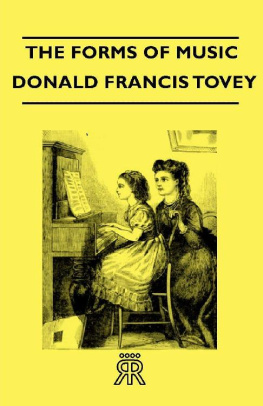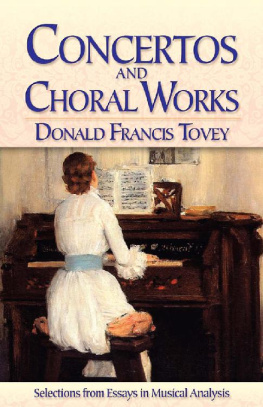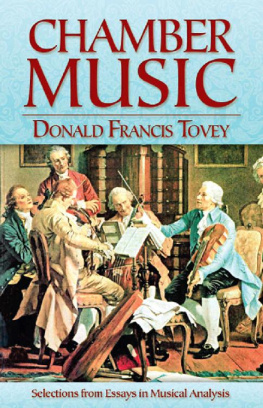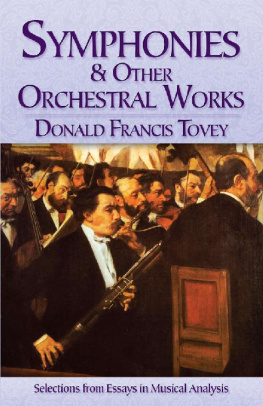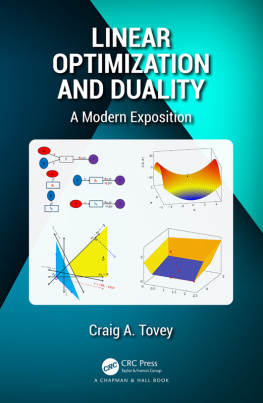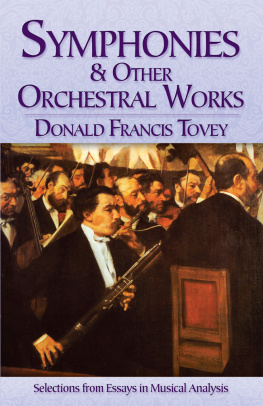Donald Francis Tovey
Born in 1875, Donald Francis Tovey was a British musicologist and composer. He took classical honors with his B.A. at Oxford in 1898, and became a pianist of the first rank, though he never sought a virtuoso career. From 1914 to 1940 he was Reid Professor of Music at Edinburgh University. He died in 1940. His other books include Normality and Freedom in Music, The Main Stream of Music, A Musician Talks, Essays in Musical Analysis, and Beethoven.
EDITORIAL PREFACE
THE desire to set down upon paper a comprehensive system of musical education was present in the mind of Donald Tovey for the greater part of his life. In 1896, when he was 21, he wrote in a letter to a friend that he had begun a great work on the means of Expression in Music.... If ever I finish the thing, into print it shall go. Thirty years later, he was talking about a series of four text-books on music. But into print neither the one scheme nor the other went: the final expression of his ideas on music was never written. It never could be written, because it was never final in the mind of that incessant discoverer in music. Nor was his method of writing that of finality.
The nearest point to finality which Tovey ever reached in his expression of a formal philosophy in music is to be found in the articles on technique and aesthetics of music (as he called them himself in the list of his writings supplied to Whos Who) which he contributed to the Encyclopaedia Britannica. Those articles, written from 1906 onwards for the eleventh edition of the Encyclopaedia, and revised again, almost rewritten, for the fourteenth edition in 1929, were necessarily cast in the imposed form of treatises under word-headings. Yet they coalesce very firmly into a clear and coherent testament, almost into a text-book of the art of music in its widest meaning. Like the Glossary to the Essays in Musical Analysis, the entries are unconnected, the whole comprehensive, and while not attempting completeness, afford the reader a wider range of musical thought and a fuller discussion of technical problems than most of the exhaustive and laborious theses now available.
Tovey himself set great store by these articles. They formed for him the basis of his teaching at the University of Edinburgh. They are the background to those fuller considerations of musical compositions which are his Essays in Musical Analysis. It was his own proposal that these articles should be gathered together into one volume, an idea expressed to me as long ago as 1926. Means were then taken towards the end of publishing, and it was agreed that Tovey should in his own time make any alterations or corrections necessary for the new method of presentation. But many other fresh and no doubt more important ideas and schemes came bubbling up into that wonderfully fertile brain, and nothing was done about the book of musical articles. I say more important because, though he was in life so fully occupied, it has now been found possible to publish these articles after the authors death.
This book contains all the articles which Tovey wrote for the Encyclopaedia Britannica, as they now appear there, with the exception of one on Modern Music and the biographies. The book was set up from printed slips, and thus follows the text finally approved and corrected by the author. The very long musical examples are printed in full. In book form, a few minor alterations have been necessary, mostly in the excising of references, and the bringing of the printers style into line with that of Toveys other books. An occasional slip in the musical examples has been corrected. We do not know what Tovey, an inveterate improver of his own works, might have done to these articles to-day, had he been alive to read them again in corrected proofs: we do know that they stand as he passed them for publication.
The alphabetical order of the key-words has, after much consideration, been retained. Those who argue that the general article Music should be printed first can, as many people will, read it out of order before the others. An index has been added.
Permission to reprint these articles as they stand has been kindly granted by the publishers of the Encyclopaedia Britannica, to whom also thanks are due for the facilities given towards the preparation of the book. The proofs have been read by Dr. Ernest Walker and Mr. R. C. Trevelyan, whose skilful assistance I gratefully acknowledge.
HUBERT J. FOSS
1943
CONTENTS
ARIA
ARIA, a term, equivalent to the English air, signifying a melody apart from the harmony, but especially a musical composition for a single voice or instrument, with an accompaniment of other voices or instruments.
The classical aria developed from the expansion of a single vocal melody, generally on the lines of what is known as binary form (see SONATA and SONATA FORMS). Accordingly, while the germs of aria form may be traceable in advanced examples of folk-song, the aria as a definite art-form could not exist before the middle of the seventeenth century, because the polyphony of the sixteenth century left no room for the development of melody for melodys sake. When at the beginning of the seventeenth century the Monodists (see HARMONY) dimly conceived the enormous possibilities latent in their new art of accompanying single voices by instruments, it was natural that for many years the mere suggestiveness and variety of their experiments should suffice, without coherent forms, to retain the attention of contemporary listeners. But, even at the outset, the most novel harmonies used with the most poignant rhetoric were not enough in themselves to satisfy the pioneers. Accordingly, Monteverdis famous lament of the deserted Ariadne is one of many early examples that appeal to a rudimentary sense of form by making the last phrase identical with the first.
As instrumental music grew, and the classical sense of key became strong and consistent (in the hands of Alessandro Scarlatti), composers were driven to appeal to that sense of harmonically-solid melody which had asserted itself in folk-music before the history of harmonic music may be said to have begun.
By Scarlattis time it was thoroughly established that an extended melody should normally modulate to the dominant after establishing its own key, and that the subsequent modulations should work through other related keys back to the tonic. Introduce the voice by an instrumental ritornello, containing the gist of the melody and recurring, in part or in whole, at every full close; and you have a form which can expand a melody so as to give ample scope both to the singer and to the accompanying players. The aria became the prototype of the CONCERTO (q.v.).
The addition of a middle section with a da capo results in the universal eighteenth-century da capo form of aria. The possibilities of variety are greater than the description might suggest. The voice may enter with a different theme from that of the ritornello; the ritornello may be stated in separate portions; the ritornello may have its own contrast between solo and tutti instruments; the vocal material may combine with it contrapuntally, and so on. All the arias and duets in Bachs B minor Mass and Christmas Oratorio differ in these matters, and the differences well repay analysis, being often subtly suggested by the sense of the words. The middle section generally contributes no new element, except that it avoids the tonic. Gluck, who swept away the whole method as inherently anti-dramatic, points out, in the preface to Alceste, that the middle section is generally perfunctory, and that the sole object of the da capo is to enable the singer to display new ornaments. Nevertheless, the classical (or Neapolitan) aria is a composition of considerable length, in a form which cannot fail to be effective and coherent; and there is little cause for wonder in the extent to which it dominated eighteenth-century music.
Next page
